Hospitalist Volunteers Give Back to Their Communities
For National Volunteer Month, April 2023, The Hospitalist celebrates four hospitalists who’ve found innovative ways to contribute their professional expertise to their communities.
Bringing their clinical skills as physicians, management skills perfected in their hospitals, and a commitment to public service, they illustrate the wide range of settings and roles where physicians are making a difference. They provide medical care to the underserved, staff or supervise medical student-run or street clinics, share their expertise in health education, introduce potential future physicians from underrepresented populations to science-based health careers, and in other ways promote diversity and equity in the communities where they live and work.
Dr. Green loves to walk

Dr. Green
Ten years ago, Amanda Green, MD, FACP, HMDC, CPPS, FHM, a hospitalist and the chief medical officer at Paris Regional Medical Center in Paris, Texas, brought Walk with a Doc to Paris. As the local program’s volunteer walk leader, she handles logistics and recruiting other doctors, and occasionally steps in to give the brief, health-educational talk that’s integral to the walk experience.
Walk with a Doc was created by David Sabgir, MD, a cardiologist in Columbus, Ohio. In 2005, he invited his patients to go for a health-promoting walk with him in a local park—and 100 people showed up. An official non-profit since 2009, there are now more than 500 Walk with a Doc chapters worldwide that promote healthier lifestyles through walking.
When the Texas Medical Association adopted the concept, Dr. Green saw an article in the association’s magazine and signed up. “We meet monthly. A doctor leads the walk, first giving an informal three-to-five-minute health talk, usually about how healthy living practices impact overall health, and then we walk, usually around two miles.”

Dr. Green and walkers in Oak Park in West Paris, considered a lower socioeconomic area, (2017).
The program has gone into medically underserved neighborhoods in Paris, trying to capture different groups of people, Dr. Green said. “I’ve done it at every track and trail in town.” But more recently it’s also evolved into a de facto wellness program for the hospital’s employees. “That’s where our hospitalists got more involved. I’d say at least half of our 12-member group has come out to lead at least one walk,” she said. “I talk it up to my hospitalist doctors. I let them pick a health topic they have an interest in.”
Two of the most recent walks, for example, were hosted by Biolese Konwe, MD, who discussed prediabetes, and Honey Cheruiyot, MD, who discussed good sleep hygiene.
Walking is one of the best things people can do for their health, Dr. Green said. Almost any medical condition treated by doctors could be improved by walking regularly. She tries to do it every day. “I really enjoy it.” Paris doctors can even write a prescription for their patients to go for a walk or get other exercise and include contact information for Walk with a Doc.
Dr. Green also enjoys the personal interactions of the walks. “You always feel you get a lot out of it. It’s just a fun community event for all ages. People bring their children, their baby strollers, and their pets.”
Dr. Green became a hospitalist more or less by accident while working part-time in an outpatient clinic with two young children at home. Her boss invited her to a lunch talk about a new hospital medicine program starting at Paris Regional. He volunteered for them to job-share a position. “So, I became a hospitalist. That was 14 years ago.”
Subsequently, she became the hospital medicine group’s leader, then hospital chief medical officer and medical director for the Lamar County Health District. She’s also active with the local school district’s School Health Advisory Committee, the St. Joseph Community Foundation, United Way, several local hospice programs, hospital ethics, and equity committees—and anything that promotes prevention.
There are lots of opportunities for hospitalists to get involved in community service, Dr. Green said. “With so many internists choosing careers in hospital medicine rather than primary care, that’s where the medical workforce is.” And the COVID-19 pandemic has only heightened the importance of educating the public on health issues.
“I appreciate every hospitalist doing what they can to make their communities better, even if it doesn’t involve a named program. Whether it’s in the schools, in our parents’ nursing homes, or at the supermarket—we’re educating people all the time. It’s the nature of what we do as doctors.”
Dr. Park works to reduce disparities
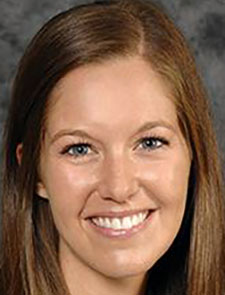
Dr. Park
Clare Park, DO, knew she wanted to be a hospitalist, delivering expert clinical care to high-acuity hospitalized patients, while still a resident at the University of Rochester (UR), Medical Center in Rochester, N.Y. “But I knew, fundamental to my identity as a physician and my personal values, that I was also going to be working to reduce health care disparities. Since I was first hired into the hospital medicine division here at UR, I’ve been looking for ways to build health-equity work into my role.”
Dr. Park, assistant professor of medicine at the UR School of Medicine and Dentistry, joined the hospital’s Inclusion, Diversity, Equity, and Awareness (IDEA) Committee as a new hire. Then she started reaching beyond the hospital’s walls into volunteer roles centered on helping create career pathways for future physicians and health care professionals, encouraging learners from identities that are under-represented in medicine.
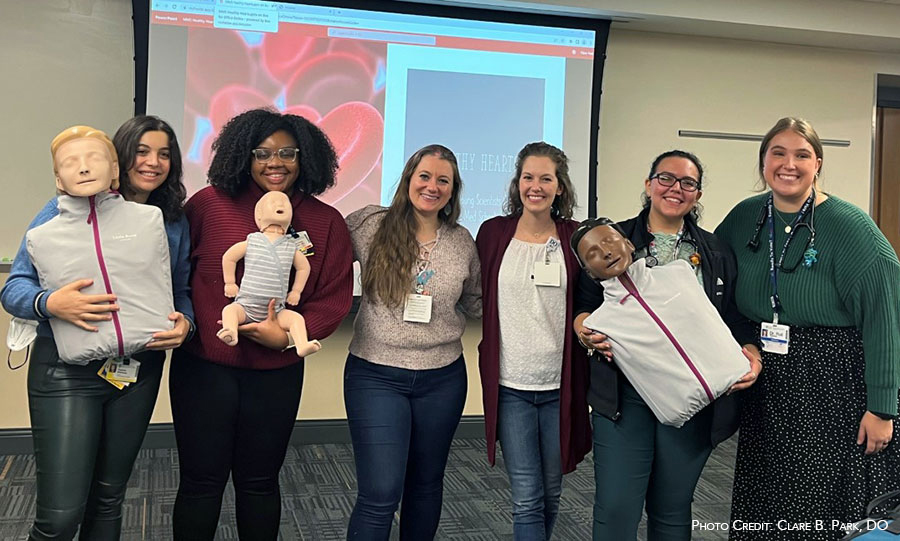
Resident volunteers for the University of Rochester’s Young Scientists Program include, L to R: Charlotte Blumrosen, MD, Nneka Ogbutor, MD, Shannon Moyer, MD, Clare Park, DO, Irene Martinez, MD, Rebekah Roll, MD
For example, UR hosts a Young Scientists Club for 5th and 6th graders from the Rochester school district. Dr. Park coordinates Saturday programs at the hospital for members of this club. “I am the coordinator for mini-medical-school sessions, which teach students about different organ systems,” she said.
“We had 50 students bussed in from Rochester city schools. They got a sense of what it looks like inside a hospital. Five resident doctors gave a presentation about cardiac health, the circulatory system, and cardiac arrest—teaching basic cardiology, CPR, and life-support skills to the students, who got to practice CPR on the mannikins. They loved that. In the open Q-and-A period, they had such great questions about what it’s like to be a doctor.”
One of the Rochester high schools has a science teacher who runs a health-careers teaching track. “I coordinate with her to bring in physician volunteers to talk to the students, sharing their stories and their expertise,” she said. “Many of the physician volunteers also come from backgrounds that are underrepresented in medicine, so that’s an immediate way for kids to envision themselves as future scientists or future physicians,” she said.
Dr. Park’s current community focus is the Bridge Mentorship Hub, a tool designed to support pathway programs for future physicians from backgrounds underrepresented in medicine. “Historically, we’ve had difficulty finding sustainable ways to identify mentors and volunteers for these programs, although not for lack of interest by the faculty. We are trying to ‘bridge’ the gap to connect mentors and mentees.”
The Bridge program started in three departments and is now part of UR’s Office of Equity and Inclusion. “We have institutional support for creating more opportunities for additional folks who might not have the bandwidth to go out and find these different programs and opportunities on their own,” she said.
Dr. Park has found that with strong support from the hospital’s departmental and division leadership, her volunteer activities have grown to become part of her day job. “Yes, I did those things initially as a volunteer commitment, but the leadership in my organization recognized the importance of this work and got behind it. A lot of these things have been considered above and beyond—and volunteer. But it has gotten enmeshed in our culture.”
The connections she makes help link the hospital with the larger community and build trust in the institution. “My hospital medicine chief sees the community work as bringing tremendous value to the division, even though it’s not hospitalist specific. He sees the way it has connected me to people in other divisions.”
As a result, the lines between volunteering in the community and her day job are no longer hard and fast, Dr. Park said. “It’s a misconception to say these are things we do completely outside of our day jobs. I see so many ways being a hospitalist has helped to support this work,” she said. Ultimately, that meant giving her protected time for the Bridge programs. “And my department has created multiple opportunities for me to advertise the work I do to other doctors,” she said. Leadership is also looking at how to value community work in the same way as research or other institutional priorities when it comes to promotions.
It can be hard to work in the U.S. health system, where it often feels that profits are placed over people, Dr. Park said. But the extracurricular work she does makes her feel that she’s having a positive impact. “Some of the best advice I got in residency was to work within your circle of influence. When I feel completely overwhelmed by systemic issues, knowing I have created space for students to thrive, to see their place and their path in life, while creating opportunities for other doctors to also have that volunteer experience, is the best way I can both work in my circle and expand that circle.”
Dr. Makowski sees hope for the future of medicine
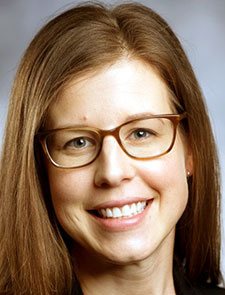
Dr. Makowski
Beth Makowski, DO, FACOI, FHM, division chief for hospital medicine with Corewell Health in Grand Rapids, Mich., was asked by medical students at Michigan State University’s Grand Rapids campus to help them launch a street-medicine program to give back to their community. “We started planning in 2018-19 and took our proposal to the University,” she said. “We were pleasantly surprised to hear ‘yes’ from everybody we spoke to. They saw this as a worthwhile program.”
Dr. Makowski is now the volunteer medical director for Grand Rapids Street Medicine, although the program is primarily run on a day-to-day basis by the medical students through their decision-making body. It offers a free, multidisciplinary medical clinic for persons experiencing homelessness, working in several settings in close collaboration with other services in Grand Rapids established to help those in need, including the fire department’s homeless-outreach team.
The Grand Rapids Mel Trotter Ministries homeless shelter was seeking to establish a full-service medical clinic onsite in its shelter. Dr. Makowski’s student team was at the table when a brick-and-mortar clinic called Community Partners Medical Clinic was proposed. “There’s now a fully renovated, brand-new clinic at the Mel Trotter shelter, which we staff on Thursdays. It’s been incredible to have access to such a great facility in this setting,” she said. “We also do community outreach, usually in partnership with local churches—on church grounds, in community centers, or out in the community, such as in parks, wherever the patients might be.”
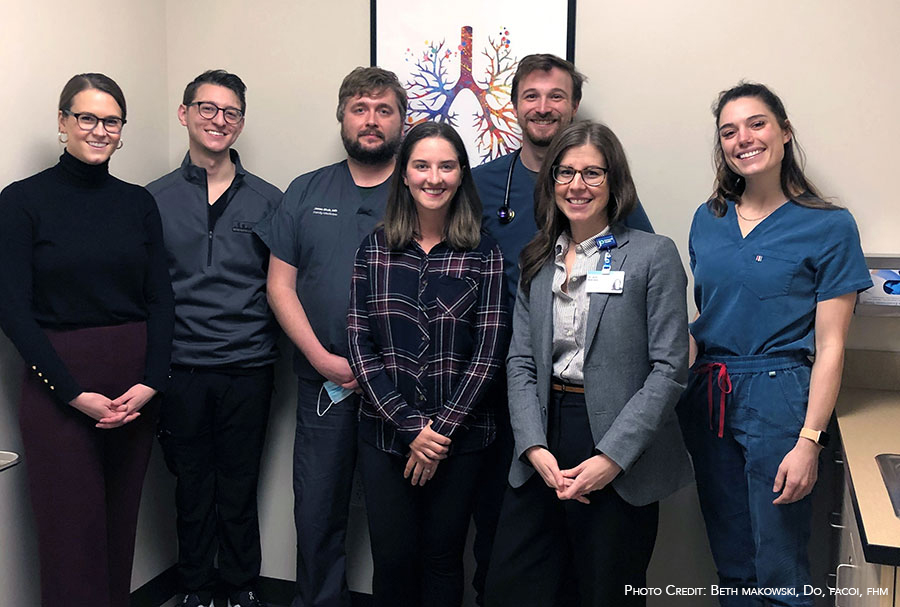
Grand Rapids Street Medicine team, L to R: Victoria Moaddel, M3, Jon Giolitti, M2, Jesse Skok, MD PGY3 Family Medicine, Christine Shafer, M3, Kyle Krzesowik, M3, Beth Makowski, DO, and Amanda Schoonover, M3.
Grand Rapids Street Medicine employs students at all different levels of their medical education. “They may be early or late in their training. We let them do as much as they’re ready to do and support them with things they’re not yet familiar with. We also allow them to take as much time as they need to go through the medical exam and history with the patient.” They are supervised by volunteer attending physicians, mostly from internal or family medicine, and residents. “The students report out to us about the patient’s concerns and needs, and then we all go back in and see the patient together,” Dr. Makowski said.
“It’s a learning opportunity for the medical students but also an opportunity for them to serve the community. There’s a little magic in that. It’s really inspirational to see how engaged they are in that work. We know there’s a gap in care for those experiencing homelessness in our community. The students do a really great job connecting with patients that otherwise may have been lost to the medical community or developed distrust of physicians.”
Dr. Makowski has encouraged the participation of volunteer physicians from her hospitalist group in the street clinic. “Since I took over as division chief in October 2021, I’ve wanted to provide growth opportunities for my team,” she said.
“It’s been cool to see hospitalists get involved with this work. We know how to provide transitional primary care, connecting people back to primary care. A lot of the care in the street medicine clinic is like what we do in the hospital, managing, for example, diabetes or hypertension. So it’s not outside of our wheelhouse—although we don’t necessarily appreciate that until we get out there on the front lines and see it for ourselves,” she said.
“My own role has evolved. I was part of all the work to get the clinic off the ground, to make the right connections, and talk to the right people at the organizations,” she said. “Now, several years later, we have student leadership that has really taken over all that. I’m not positioned to be running the day-to-day operations of a clinic for people with homelessness while still doing my other job. But I was well positioned to help them get started,” she said.
Now she provides more operational support and helps with things like supporting the implementation of an electronic medical record system donated to the clinic. “I help with my experience as a physician and administrator to fill in the gaps where they just don’t have a lot of experience,” she said.
“It’s really fulfilling. On days when you’re tired and have worked a long day, and then you go down to the clinic, everybody really appreciates getting the medical care they need in these settings. It just drives it home for me,” she said. “I really believe in the students and believe in what they can accomplish. They’re incredible people, so motivated, so intelligent. I have so much hope for the future of medicine when I work with them because they care so much about this work.”
Dr. Hozayen finds the heart of primary-care medicine in a neighborhood clinic
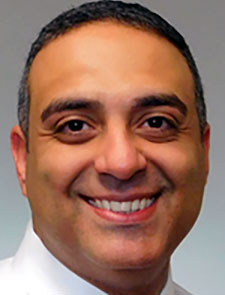
Dr. Hozayen
Sameh Hozayen, MD, MSc, FACP, cardiologist, hospitalist, and assistant professor of medicine at the University of Minnesota in Minneapolis, trained in Cairo, Egypt. He came to this country 14 years ago with a vision for a multidisciplinary form of health care where those from different professional roles in the patient’s care regularly confer with each other face-to-face, with enough time to spend with their patients regardless of income, insurance or lack thereof, whether they can pay for their care or not— because there’s no charge for the care.
The U.S. health care system doesn’t often offer him that kind of opportunity—except when he volunteers at the Phillips Neighborhood Clinic (PNC), a student-run health service housed in a church basement in a largely Spanish-speaking neighborhood in South Minneapolis. “At the PNC, we see patients regardless of their citizenship, immigrant status, language, ethnicity, race, gender, religion, or socio-economic status. None of that matters. You walk in and you’re seen by a team of students under the preceptorship of volunteer preceptors,” he said.
Dr. Hozayen does a four-hour volunteer shift once a month at PNC, which is open two evenings a week. The health care team also includes students of audiology, health care administration, medicine, medical lab science, nursing, nutrition, occupational therapy, pharmacy, physical therapy, occupational therapy, public health, and social work. Care is provided by these professional students with fully licensed clinicians as their preceptors.
Each patient’s case is reviewed by the full multi-disciplinary team (as many as 20 people) standing in a huddle, focused on one patient. “Before I let the medical student leave, I provide teaching. But I let the student lead and do what they are trained to do,” Dr. Hozayen said. “This is an integral part of their medical education, at one of the biggest student-led clinics in the country, and all of the preceptors are volunteers.” Most of the students and the preceptors come from the University.
PNC, open since 2003, is a joint project of the University of Minnesota Medical School and the University of Minnesota Physicians medical group. Its medical director is Brian Sick, MD, director of the division of general internal medicine at the University of Minnesota, who Dr. Hozayen considers a mentor. About a dozen hospitalists from Dr. Hozayen’s group practice also volunteer there.
All the lab tests and prescriptions are provided at a reduced cost, courtesy of nearby Fairview Health Care. Community health workers provide guidance in securing the patients’ more regular and permanent sources of primary health care, typically in a primary care clinic. “This program is not designed to take over as full, permanent primary care service,” he said.
What does Dr. Hozayen bring back to his day job from a shift at the clinic? “The multi-disciplinary nature of the work at PNC is something I really appreciate. When possible, I try to meet other professionals in person to talk about our patients. It doesn’t always work, but I try,” he said.
“I don’t know why we can’t do this in other primary care settings across the country. I know it’s time-consuming, but conventional medical care is time-consuming for the patient, and still manages to be very expensive.” Dr. Hozayen also appreciates the opportunity to deliver culturally sensitive care, especially for patients with whom he shares a cultural background. “I’m Middle Eastern, Egyptian, a non-native, a Muslim. I understand those cultural backgrounds, including people from Somalia, who represent one of the largest immigrant populations in Minnesota.”
He is also called on to confer on such patients by his hospitalist colleagues. For example, some African or Muslim families might feel a powerful sense of responsibility to bring their loved one home from the hospital as soon as possible, rather than let them go to a transitional-care unit for a period of rehabilitation before returning home. “As someone from their culture, I can tell them this is a way for their loved one to get the physical therapy they need to recover their muscle mass so they can then go home with more independence,” he said.
“I went to medical school at age 17 because I wanted to eliminate pain and suffering,” Dr. Hozayen said. “My grandmother died from a medical error, and I didn’t want anyone else’s grandmother to go through that.” He said he thinks PNC represents what primary care should be across the country. “This clinic, with its quality of multidisciplinary, compassionate care, exemplifies everything I’d like to see in medicine.”
Larry Beresford is an Oakland, Calif.-based freelance medical journalist and long-time contributor to The Hospitalist.